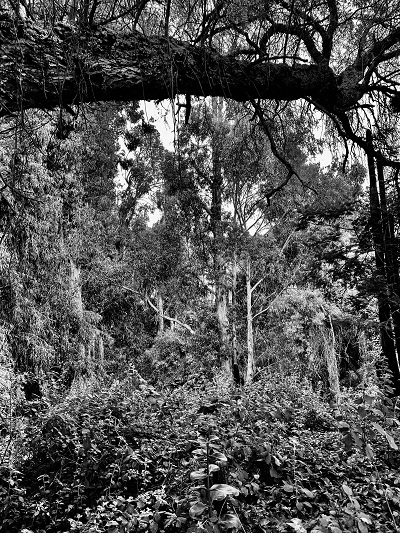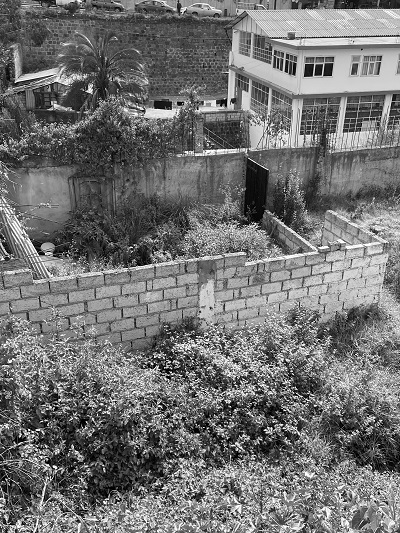Surrounded by Nature or Surrounding Nature? - Wilderness in an Andean City
01.10.2021
By Dörte S. Neumeister
Supervisor: Dr. Gesa Lüdecke

Urban development and the creation and expansion of cities, in particular, are associated with pollution and destruction, and in many ways are seen as the antithesis of nature (Kuckartz 2002). Urban development is also perceived as the removal of nature and the replacement of buildings and other infrastructure, as well as the transformation of the natural environment into a built environment (Weeks 2010). To define the urban, comparisons with rural areas have been drawn and a dichotomy established. However, urban and rural also stand at distinct ends on a constructed continuum (Weeks 2010). with wilderness representing the extreme end of such a continuum, beyond the rural. The phrase “urban environment” therefore evoke images of pollution and destruction while “wilderness” is associated with purity (Rink and Emmrich 2005; Weeks 2010), as undisturbed and untouched nature. However, is it possible for wilderness to exist within urban spaces?
For my project, I explored the concept of wilderness within urban spaces through black and white photography. I also investigated how wilderness within urban environments may be perceived and maintained, as well as which types are seen as worth preserving. Using photography, I wanted to call forth the contrast between the way humans created a world dominated by straight lines and angles and the more organic smooth angles and curved lines found in nature. Although such a dichotomy may not exist, the contrast between what is made by humans and what grows naturally is often clearly visible in urban environments. I therefore hoped that by using black and white photography I could take color out of the equation and focus on the shape and form of the elements that we create and which surround us, as well as on the ways we allow these places to be overtaken by other organic elements.
[Please, insert here image “IMG_2269”]
The photographs were taken in Ambato, a city in the Ecuadorian Andes located approximately 2600 meters above sea level. Ambato was established in 1698 and has grown rapidly over the last 20 years; it is estimated that the population has increased from 287,000 inhabitants in 2001 to 391,000 in 2021 (Instituto Nacional de Estadistica y Censos n.d.; n.d.). Historically, a town dominated by orchards and dependent upon the commerce of fruit and vegetables, Ambato has transitioned to industrial activities and the orchards that were previously found in the city have been transformed into residential neighborhoods. Despite its growth, Ambato still possesses areas where no urban development has yet taken place.
[Please, insert here image “IMG_2362”]
From this project, I learned that wilderness can develop amongst urban environments, often growing by chance. The places I found in the city were areas where land development was not possible, such as around abandoned building sites and in city parks with reduced management, with nature allowed to follow its own course. Finally, regardless of public perception of these sites, the ecosystem services they provided remained important, even though they often go unacknowledged.
Literature Cited
Instituto Nacional de Estadistica y Censos. n.d. “Población y Demografía.” Instituto Nacional de Estadística y Censos. Accessed July 28, 2021a. https://www.ecuadorencifras.gob.ec/censo-de-poblacion-y-vivienda/.
———. n.d. “Proyecciones y Estudios Demográficos - Sistema Nacional de Información.” Accessed July 28, 2021b. https://sni.gob.ec/proyecciones-y-estudios-demograficos.
Kuckartz, Udo. 2002. “Umweltmentalitäten in der deutschen Bevölkerung. Ergebnisse der Studie „Umweltbewusstsein in Deutschland 2000“.” In Lebensstile und Nachhaltigkeit: Konzepte, Befunde und Potentiale, edited by Dieter Rink, 117–29. Reihe „Soziologie und Ökologie“. Wiesbaden: VS Verlag für Sozialwissenschaften. https://doi.org/10.1007/978-3-663-10620-3_6.
Rink, Dieter, and Rico Emmrich. 2005. “Surrogate Nature or Wilderness? Social Perceptions and Notions of Nature in an Urban Context.” In Wild Urban Woodlands: New Perspectives for Urban Forestry, edited by Ingo Kowarik and Stefan Körner, 67–80. Berlin, Heidelberg: Springer. https://doi.org/10.1007/3-540-26859-6_4.
Weeks, John R. 2010. “Defining Urban Areas.” In Remote Sensing of Urban and Suburban Areas, edited by Tarek Rashed and Carsten Jürgens, 33–45. Remote Sensing and Digital Image Processing. Dordrecht: Springer Netherlands. https://doi.org/10.1007/978-1-4020-4385-7_3.

